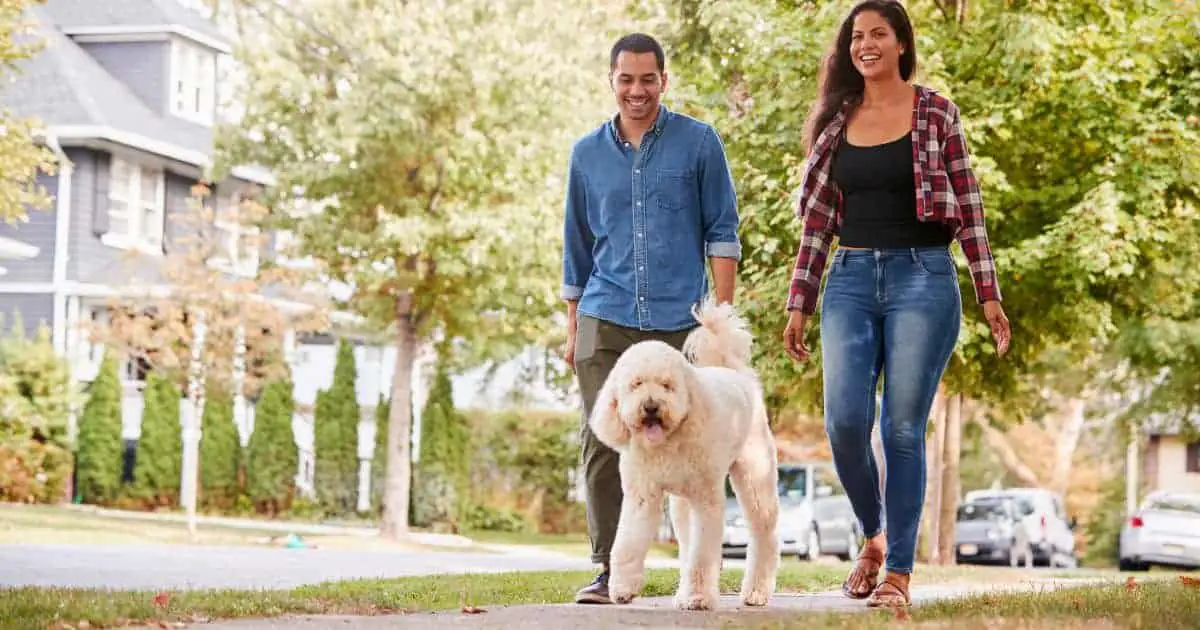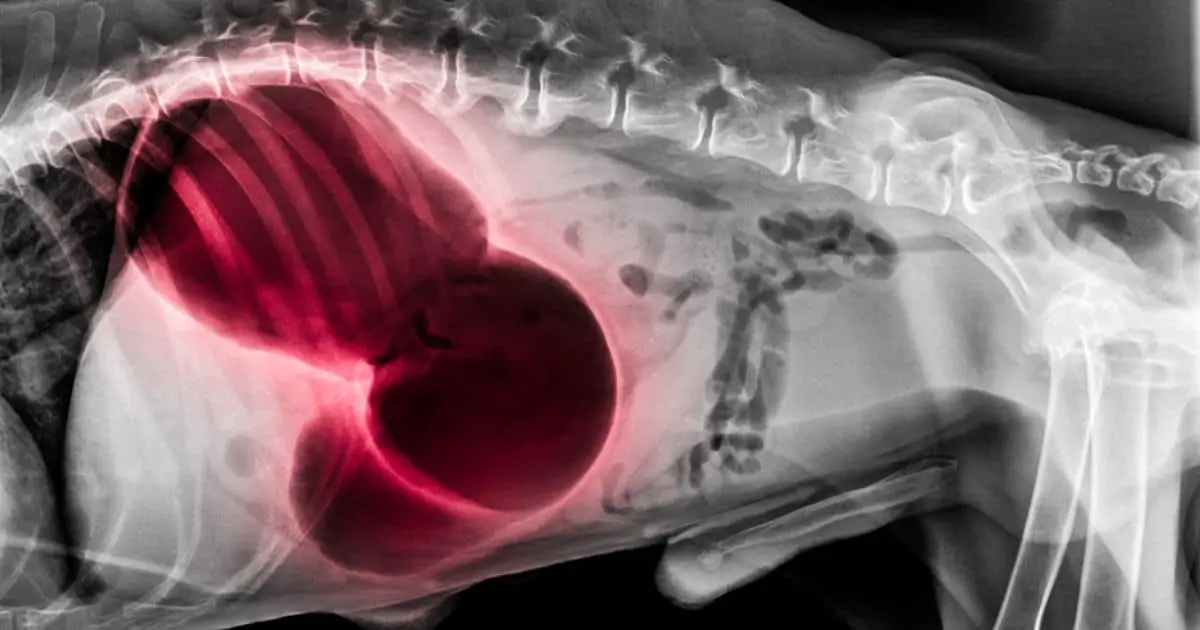Is it better to feed your dog before or after a nice stroll through the park? Should you leave your dog’s food bowl out during the day so they can graze gradually, or limit them to a specific time?
Can vigorous exercise after your dog eats result in an upset stomach, or worse?
We’ve explored all of the research to give you a comprehensive answer to the question of “Can I walk my dog 30 minutes after eating?”
The potential risk of exercise after a meal is rarely discussed when it comes to dogs, but is extremely important to know as it can result in a condition known as gastric dilatation-volvulus.
Walking Your Dog After Eating

If you ever walk your dog 30 minutes (or shortly) after eating, you need to ensure you keep a slow pace. This is true for puppies and adult dogs alike, regardless of energy levels. If your pet is more rambunctious, it is always better to err on the side of caution and wait until proper digestion has taken place. Make sure to do this before taking your dog out or engaging them in any physical activity.
How Long Does It Take for a Dog to Digest Food?
Nutrition is vital to your dog’s overall wellness, especially when it comes to the question of, “Can I walk my dog 30 minutes after eating?”. Beyond the impact physical activity has on digestion, it is important to know the importance of proper digestion to your dog’s immunity. Nutrient absorption is the key to ensuring a healthy dog, and this can only take place if the food your dog eats is digested fully and utilized by the body effectively.
For most dogs, full digestion takes place in the span of 6-10 hours, with 4-5 hours being average for younger puppies. This doesn’t mean that you have to wait 10 hours to walk your dog. It simply means you need to allow your dog a buffer for the time it takes to begin proper digestion. A half hour just isn’t enough in this regard.
How Long Do I Wait After Feeding Before a Walk?
The professional advice from veterinarians is to always try to wait at least 2 hours (ideally more) after eating before taking your dog on a walk. Any sooner could trigger GBV (Gastric Dilatation-Volvulus) at the worst, and bloat/digestive issues at the least.
Water being slowly consumed is also important, as gulping down water immediately after eating can create large amounts of air being ingested. This increases the risk of GBV.
The time will also depend on the amount of food consumed – a smaller meal or snack (like a treat) may only call for a period of an hour rest, while a larger meal benefits from taking 2-3 hours before any activity.
What is Gastric Dilatation-Volvulus?

A term that perhaps sounds much more menacing than what it means. GBV (Gastric Dilatation-volvulus) is essentially a severe stomach twist/twisted stomach. This most commonly occurs within the first two hours of feeding your dog, hence the recommendation to wait at least 2-3 hours after your dog has eaten before taking them on a walk.
Conversely, if you want to walk your dog before feeding them, you should wait at least 30 minutes to one hour after exercise. It is also much more practical and a better idea to break up meals into smaller meals spread throughout the day rather than one large meal at a single time. You’ll also want to try your best to prevent your dog from scarfing down their kibble and ensure fresh water is always nearby at the time of feeding.
Meal times should be structured, and heavy meals should always be avoided.
A number of other things can cause GBV, but the combination of a large meal with strenuous exercise is the most frequent trigger.
Signs to Look Out For in Cases of GBV (Gastric Dilatation-volvulus)
In the initial stages of GBV, the dog may have a painful abdomen or a distended abdomen. Dogs with deep chests (like Greyhounds or German Shepherds) are at a greater risk for experiencing GBV.
This initial stage means the dog has likely just had a large meal or a lot of water quickly, and then engaged in a lot of vigorous exercise – gas may be accumulating in the stomach, and the stomach is not emptying as it normally should. If you keep your dog relaxed and cease activity at this point, they are likely to recover without any additional need for intervention.
In the second stages of GBV, the stomach begins to dilate and twist if not addressed, and the dog will be noticeably distressed: exhibiting signs of drooling, pacing, moaning, and an abdomen painful to touch. Once this reaches the later stages, the veterinarian will need to intervene with surgery to address the twists or knots in the dog’s stomach. At these stages, blood supply in the stomach will have been cut off, sending the dog into a state of shock.
Visible signs include large amounts of drooling, with legs apart and shallow breathing. This condition can proceed to be life threatening very fast, so getting appropriate care is paramount to your dog’s outcome.
The best way to avoid this is to simply follow the guidelines outlined by professional veterinarians – walking your dog several hours after a meal, or at least 30 minutes prior to a meal.
Conclusion
Dogs, like many other animals, are able to sustain extended periods of fasting, and simply don’t require food to ‘sustain’ the energy levels required for things such as a walk. Walking can also help aid in a dog’s digestive health and blood sugar levels.
After eating, the blood sugar levels will rise. Walking your dog after a larger meal (provided enough time has passed) is an easy way to help stabilize blood glucose levels.
As always, exercise cautious judgment when it comes to your dog’s health. They still need adequate food and nutrition on a daily basis, just as they need to be walked regularly for routine exercise. For those asking, “Can I walk my dog 30 minutes after eating?”, you now have the answer.
